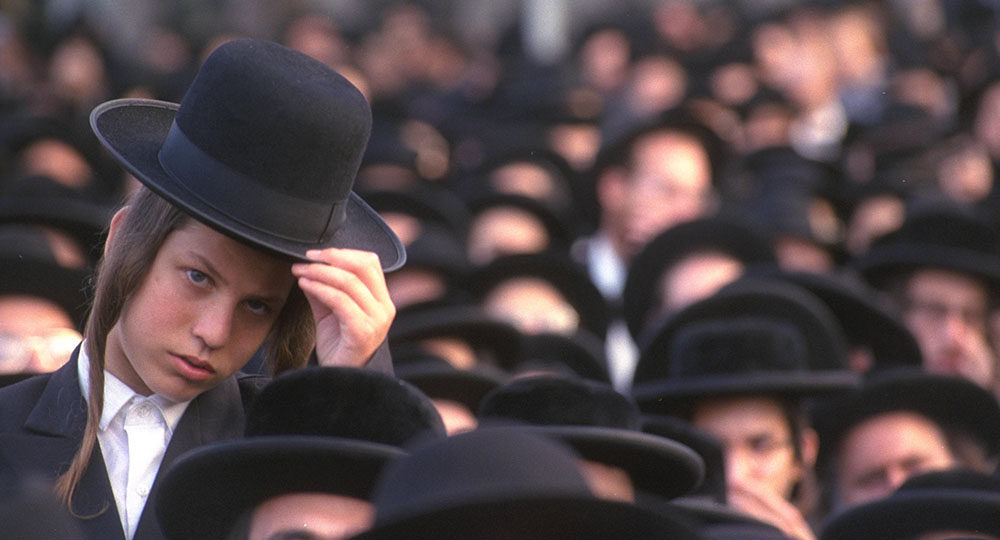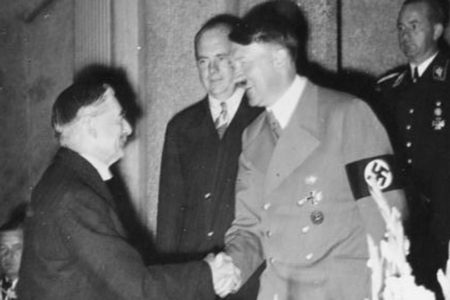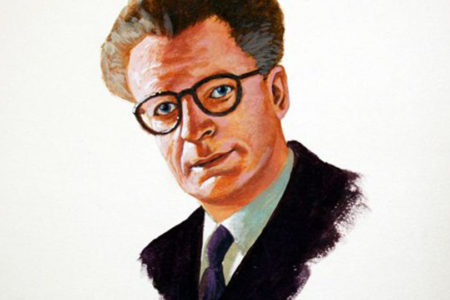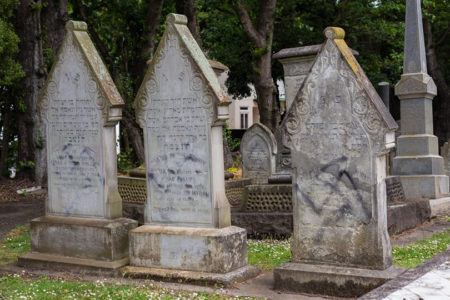The World of the Hasidim Part Two
Rabbi Israel Ben Eliezer, known as the Ba’al Shem Tov (“Master of the Good Name”), is such a significant figure in Jewish history that even today his name evokes admiration and respect, particularly among the ultra-Orthodox Jews—the Hasidim. In fact, it is impossible to understand the Hasidic movement without understanding something about Rabbi Israel.
Often referred to by the acronym Besht, Rabbi Israel was born in the village of Okup, Ukraine, in 1700 to poor, elderly parents who died when he was still young. His village felt obligated to take care of him and provided food, clothing, and religious training.
As a young man, he worked as a shamash (sexton) at the local synagogue. He taught young children the Hebrew alphabet and how to recite simple prayers, using his free time to study the mystic book of Kabbalah. After marrying, he moved to the Carpathian Mountains where he earned a humble living by digging lime and selling it in nearby villages, his mind free for prayer and meditation. In an inn operated by his wife, Israel mingled with many of the guests, whom he impressed with his wisdom and piety. He taught using simple stories and parables that appealed to the majority of the people.
He continued to study Kabbalah, pray, and meditate. His use of herbs for healing enhanced his reputation, and stories emerged of his miraculous healing power. According to writer Deborah Pessin, “Israel always radiated contentment and happiness, people came to him when they were in trouble, or when they wanted help or advice.”1 Though he had little formal training, it was not long before people addressed him as master, even rabbi. His personal advice blossomed into messages filled with hope and joy, which people flocked to hear. It is said he cured, healed, and even exorcised demons. Paul Johnson, in his book A History of the Jews, wrote,
Like John Wesley [founder of Methodism], he traveled around the country. He wrote amulets. He cured and purged men of their evil spirits….But in addition he had genuine charisma: men and women felt themselves capable of higher aspirations, or purer behaviour, in his presence. This impression of intense, though homely, sanctity was reinforced by his cures, which were often spectacular, by his dreams in which he correctly foretold events, by his mystical states and by the miracles attributed to him.2
Looking for a ‘Higher State’
Rabbi Israel’s teaching emphasized closeness to God, a position that had seemed unattainable to the poor, ignorant peasants. Furthermore, he held the radical belief that one did not need to be educated to be close to God. He believed “intellectual study and learning took a secondary place.”3 The Besht did not exclude intellectuals, but he did not cater to them either. Instead, he modified Judaism for the masses. Lis Harris, in her book Holy Days, explained:
The Besht and his followers never rejected a single tenet of Orthodoxy. They did, of course, introduce certain innovations, among them permitting the hours of prayer to vary, so that people could pray in less of a hurry and, it was hoped, with more feeling; eliminating the cantor, long a fixture of synagogue life, from the service so that any pious man could lead it; and declaring that dancing and singing were appropriate ways to express religious enthusiasm.4
He also espoused a type of biblical panentheism, which holds to the “everywhere-ness” of God. He taught, wrote Pessin, that “God was everywhere, in whatever man touched or felt or saw. Simple prayers were enough to reach God, if one’s heart was in the prayers.”5
The Ba’al Shem Tov wanted his followers to pray loudly, read loudly, and sing loudly to bring about a type of higher state. Writer Haim Hillel Ben-Sasson explained:
Prayer was his main ecstatic and mystic approach to God….In specially exciting moments he reached a state of mystical exaltation—aliyyat neshamah—of which he gave realistic descriptions. Future events and past personalities, both good and evil, were shown to him in dreams. In traditional tales he is portrayed as engaged in conversation and in meeting with people, even women….He is never described as preaching in a synagogue. Israel’s teachings do not indicate any talmudic scholarship, and his opponents criticized him for the lack of this and for his preoccupation with healing, writing amulets, and his conversation with simple men.6
He encouraged his followers to be in the “now”: to be joyful now, pray now, and draw close to God now in common, everyday life. He called this principle devekut (“adhesion”).7 The Ba’al Shem Tov, wrote Avraham Rubenstein, believed “man must worship God and cling to Him not only when practicing religious acts and holy deeds, but also in his daily affairs, in his business, and in social contacts, for when a ‘man is occupied with material needs, and his thought cleaves to God, he will be blessed.’”8
To counter the disappointment of messianic imposters, the rabbi de-emphasized them without eliminating the person of the Messiah. He stressed salvation of the soul. His mission in life seemed to come from a dream, in which he questioned someone whom he said was the Messiah: “‘When will you come master,’ and he answered me, ‘When your learning will be made known and revealed to the world and its source will spread…and all can experience spiritual ascent as you can.’”9
Mysticism still abounds in Hasidism today. Many Lubavitchers, for example, believe they communicate with their late leader, Rabbi Menachem Mendel Schneerson, who died in 1994. When they have important questions, they write them down and place them in a book at their headquarters in Crown Heights, New York. Later, when they retrieve the questions, they say they have their answers from Rabbi Schneerson.
Scripture, of course, condemns such practices: “Should not a people seek their God? Should they seek the dead on behalf of the living?” (Isa. 8:19).
The Besht did not neglect the study of Torah, but he did not study in the conventional way. Emphasizing the letters of the words rather than the content of the messages, he believed the actual letters contained hidden meaning and that, until one understood these meanings, one could not understand the words the letters made.
To enter what he called the “heavenly halls” of prayer, the Besht believed a man had to “annihilate his personality and become nothing.” Paul Johnson explained: “He thus creates a vacuum, which is filled up by a sort of supernal being, who acts and speaks for him….I let the mouth speak whatever it wants to say.”10
The Besht arrived at this belief by studying Kabbalah. Emerging as a type of theology around the year 1200, Kabbalah, from the Hebrew word meaning “tradition,” appealed to the Besht because it de-emphasizes the holy books and stresses that the actual letters, numbers, even accent marks, are keys to knowledge.
Today Britney Spears, Madonna, Demi Moore, and others of their ilk have embraced this one aspect of Hasidism.
Family Life and Worship
Hasidism makes a clear distinction in the roles of men and women. The men are the spiritual and political leaders, while the women are the caregivers for the children they bear and the houses they maintain. Women are to act and dress modestly. Education is based on a hierarchy. Boys are at the top, ranked by their intellectual capabilities as they relate to the Bible, Talmud, and other holy writings. Girls, however, need not concern themselves with such details. Few Hasidic women pursue higher education. Boys and girls are separated when young, and mingling between the sexes is not encouraged. In worship, a physical barrier separates the men and women. Most marriages are arranged. A good catch is a pious rabbi’s scholarly son. Athletic ability and outward beauty are not emphasized.
The Besht made Hasidic meetings spectacles in and of themselves. They are noisy, filled with loud prayers, loud singing, hand clapping, and dancing. This brings an excitement and enthusiasm to worship that people love. Worshipers are encouraged to act on Psalm 35:10: “All my bones shall say, ‘Lᴏʀᴅ, who is like You…?’” The Besht taught that the shoemaker, woodchopper, tailor, and weaver should dance and rejoice because God accepts them the way they are.
ENDNOTES
- Deborah Pessin, The Jewish People (New York: United Synagogue Commission on Jewish Education, 1953), 3:101.
- Paul Johnson, A History of the Jews (New York: Harper & Row, 1987), 296.
- Haim Hillel Ben-Sasson, “Israel Ben Eliezer Ba’al Shem Tov,” Encyclopaedia Judaica, CD-ROM edition.
- Lis Harris, Holy Days: The World of a Hasidic Family (New York: Summit Books, 1985), 52.
- Pessin, 3:102.
- Encyclopaedia Judaica.
- Avraham Rubenstein, “Israel Ben Eliezer Ba’al Shem Tov,” Encyclopaedia Judaica, CD-ROM edition.
- Ibid.
- Ibid.
- Johnson, 297.







